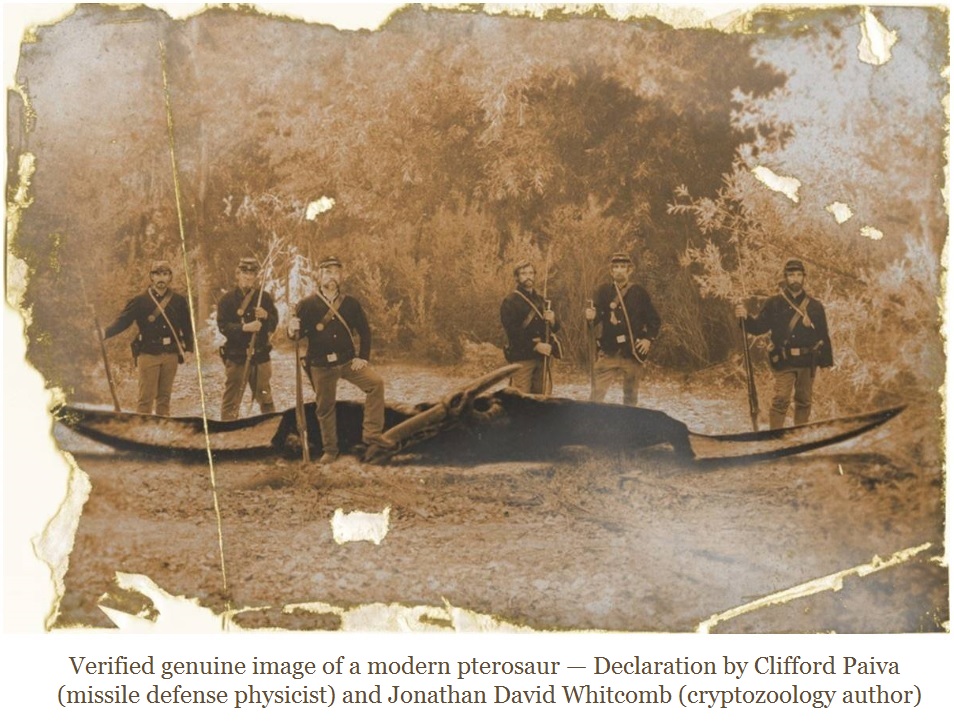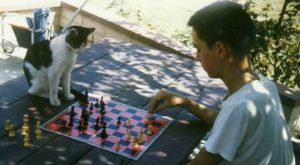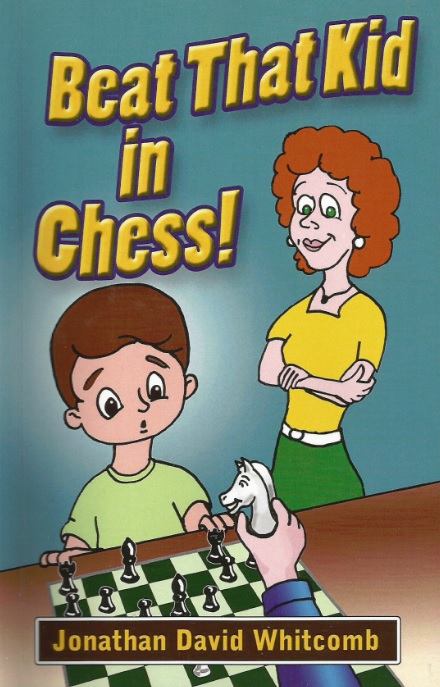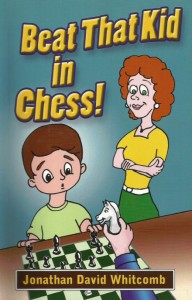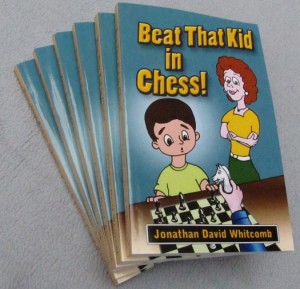Author Archive
Genuine Photograph of an Extant Pterosaur
by admin on Mar.23, 2017, under Strange
On January 14, 2017, Clifford Paiva (a physicist in California) and Jonathan Whitcomb (a forensic videographer and cryptozoology author in Utah) jointly declared their belief in the authenticity of an old photograph that contains an image of an apparent recently-deceased Pteranodon.
Previous to that date, skeptics had dismissed the photo as being a hoax created by Photoshop. Paiva and Whitcomb, however, have declared that they have discovered numerous evidences that no digital image manipulation was involved and that the photo has distinctive evidence that it was recorded prior to 1870.
This is a study in cryptozoology, with an apparent “living fossil” that appears to have been a Pterodactyloid pterosaur. Paiva and Whitcomb stopped short of insisting that the animal was a species of Pteranodon, but they have pointed out the obvious similarities in appearance between this image and what is known from Pteranodon fossils.
.
“Ptp” photograph declared authentic by Paiva and Whitcomb, January 14, 2017
.
“Missing Fingers” and Photoshop
Prior to 2017, the most damaging apparent evidence against the photo were the missing fingers on the hand of the man on the far left. That lack of fingers was used by some skeptics to ridicule the image as a Photoshop hoax. But serious errors have been pointed out by Whitcomb, regarding the hand of that man.
According to Whitcomb, the way that those fingers would have gone missing from using Photoshop would have been in a digital cut-and-paste: A soldier-image would have had his arm out to his right (our left) as if holding a rifle but the rifle-image would be pasted over that part of his hand. In other words, a hoaxer would have had to find a photo of a soldier that had his arm out as if holding a rifle but without any rifle. That alone would shoot down the Photoshop conjecture, regarding those missing fingers. How many Civil War soldiers had their photographs taken while holding out their arms, as if holding their rifles, but without any rifle?
But Whitcomb found a reasonable explanation for the missing fingers. He noticed that another soldier was holding a rifle with the ram-rod showing. The soldier on the far left (with missing fingers), however, had a rifle in which the ram-rod was not visible. Apparently the rifle was turned in such a way the the ram-rod was behind the camera’s view. That soldier was holding his rifle by the ram-rod, making the ends of his fingers not visible to the camera.
Discovery by a Physicist
Paiva found a branch under the beak of the animal. It was, apparently, used as a prop to keep the man’s foot and the animal’s beak steady during the many seconds of exposure needed for the photograph. That length of time for the exposure of a photograph was necessary before about 1870, so props were often used to keep people perfectly still.
###
copyright 2017 Jonathan Whitcomb
.
The original Civil War pterosaur photo
The photograph now called “Ptp” has been around for a long time, possibly in one or more books in the mid-20th century, according to a number of persons who report remembering it.
A Pteranodon in a Civil War Photo
The American physicist Clifford Paiva found evidences of the photo’s authenticity, after examining the details. One of those was a shadow of the front soldier’s shoe on the beak of the animal. Paiva declared that this shadow is consistent with other nearby shadows.
Dinosaur or pterodactyl in a Civil War photograph
Years ago, a scientist in California began noticing details in a photograph, clues that the image of an apparent modern pterosaur was genuine. On January 14, 2017, I spoke with Clifford Paiva (a physicist) by phone. We agreed that the photo (now labeled “Ptp”) has a genuine photographic image of a modern pterosaur. Some people call this kind of animal a “flying dinosaur” or a “pterodactyl.”
Skeptical Responses to Civil War Pteranodon Photo
The dead flying creature seen in the “Pteranodon photograph,” (Ptp) although it may be called a “pterodactyl” by some Americans and a “ropen” by others, could be a pterodactyloid pterosaur, possibly without the long tail that ropens are seen to have.
.
Chess Lessons or by the Book?
by admin on Jul.14, 2016, under Chess
By the chess tutor and author in Utah: Jonathan Whitcomb
Introduction
Whether you decide to take private chess lessons from a tutor or just study from one or more books, one proven method of improving your game is this: Concentrate on actual chess games against one or more worthy opponents. How critically important is that little detail of practicing what you learn!
Do you play so badly that your house cat beats you? Keep concentrating and learn from your mistakes. Soon you’ll beat that cat and prove yourself worthy of human competition.
Me (Jonathan Whitcomb) as a teenager in the 1960’s
I’m now a much better chess player and the cat is dead
We can learn something from that, surely . . . something
Learn Chess Through Books
I improved my chess through practice in actual games and by reading chess books. I won the 1966 Pasadena (California) Chess Club Junior Championship with a perfect 4-0 score, but I studied and practiced for years before getting to that point.
You can also learn from chess books and from playing against worthy opponents, but be aware that major improvement, giving you first place in a tournament, will probably take years, possibly many years. The road to winning a chess tournament is usually a long road if you depend on chess books and never have any private lessons from a tutor. I know that from experience over a period of decades.
Why is progress so difficult with only studying from chess books? It’s not always so, and we’ll soon look at an exception, but in general it’s this: The author of the book you stare at has no idea exactly where you stand at the moment in your chess abilities. And since you are the student, how can you figure out what you most need to learn at the moment?
Before showing an example of the challenge of learning from chess books, please let me promote my own publication: Beat That Kid in Chess. Why is this an exception? I wrote is specifically for the raw beginner, the novice who knows the rules of chess but almost nothing else about how to play. In other words, my chess book works best for the player who has not yet won a game, not that the competition is fierce but that he or she has no idea what moves to make on the board.
Giving yourself, or someone else, a copy of Beat That Kid in Chess is like giving a car, and the car keys, to someone who might eventually drive across the country in that vehicle. (Knowing the rules of chess is like knowing how to drive.) My book is more than just the owner’s manual, however, telling you about the periodic vehicle maintenance schedule and about how to use Bluetooth with your cell phone while driving.
Beat That Kid in Chess is also like a small road map of your neighborhood, showing you how to safely get to and from the nearest supermarket while avoiding the more dangerous intersections. It also has something like the directions to the nearest freeway, although you’ll eventually need a much more substantial collection of maps to get you across North America while enjoying many tourist attractions.
By the way, becoming a grandmaster can be compared to becoming a working biologist. After graduation, you can drive through your neighborhood, get onto the nearest freeway, and eventually get to Yellowstone National Park. There you’ll hike deep into a remote forest where you’ll study the behavior of the local wildlife, with a deep knowledge and understanding that you already obtained from your lengthy education in biology. You’ll also have spent much time getting the exercise necessary to make it possible for you to make that long hike.
Beat That Kid in Chess – The book for the beginner
Now for the example of how chess books can fail. I won’t mention names, but I know of a man, living in the Western USA, who got some practice in playing in his chess club (but probably not nearly as often as once every week). He also got a few chess books from a particular grandmaster-author. That’s when he went astray.
The man loved general principles of strategy, the kind of perspectives that grandmaster excel at. He had some success, at least in some of his games at his chess club. But then he started teaching (using an online medium that I will not mention—I don’t want to reveal his identity.) He became almost a celebrity, in his narrow field of chess education, using his enthusiasm to correctly explain principles of competition and strategy. What’s wrong with that? Most of what he said was true, in those generalities about playing and winning chess games.
Yet he took the position of an American football coach who has never played football outside his childhood backyard. He became popular in teaching in his online medium, and he won some of the games he played at this chess club, so what was the problem? He tried to pole vault to the top of a ladder that was much higher than he had anticipated. He should have climbed up that ladder one step at a time.
After his successes in publicizing his teachings about winning chess games, he entered a small tournament. As I recall, not one of the players was a master, and experts (if any) were few. Yet the man who had enjoyed so much success in apparently teaching others how to win at chess, the man who had learned so much about advanced strategy—that man did very poorly in the tournament. As I recall, he won only one game but lost many.
Learn Chess With a Tutor
I’m a chess instructor, living in the Salt Lake Valley of Utah. I know something of how the beginner and the post-novice and the moderately-advanced player, can benefit from chess lessons. It begins with tactics, NOT strategy.
The man who went astray in the study of strategy first, that man who did so poorly in his first tournament—he had not taken the first steps up the ladder, those critically important steps of learning and practicing tactics in the simplest perspective.
Chess lessons from the right tutor can get right to the point: where you now stand in your tactics. Don’t throw away a piece or pawn without compensation, and take advantage of your opponent’s blunders in giving away a piece or a pawn. Tactical motifs like the knight fork and the pin—those can come soon thereafter.
If you live in or near the Salt Lake Valley of Utah, get in touch with me to talk about chess lessons. You can call me at 801-590-9692 or send me an email.
###
.
Learning Chess by a Book or by Private Lessons
Just as an enjoyable sport can give your body physical exercise, the enjoyment of a game of chess can give your brain exercise. [For improving your game, between practicing in actual chess competition, private lessons can be the best way to go.]
The chess-book author Jonathan Whitcomb, of Murray, Utah, is now offering a new method of chess instruction in private lessons in the Salt Lake Valley.
A brief search on Amazon, for chess books, can give one the impression that there’s an unlimited number of them, including publications for novices. The following are a few of the available chess books for beginners.
Best chess book for many beginners
For a teenager or adult who knows the rules of chess but little else, the choice may be easy: the new book Beat That Kid in Chess [even though the cover and title seem to suggest this chess book is for children]
.
Combinations in Chess Books
by admin on Dec.14, 2015, under Chess
Of the countless thousands of chess books that have been published over the centuries, some are notable in teaching the art of combination. Tactics are usually involved in combinations, and many of those attacking moves are in the middle game.
Let’s review three relevant books.
The Art of Chess Combination
The English-language version was originally published by Dover in 1959, and an enlarged edition came out in 2010. The author, Eugene Znosko-Borovsky, was a chess master in the early 20th century, best known in later decades as a writer of chess books. This particular one (probably like his other books) is not for the raw beginner but for intermediate or advanced players.
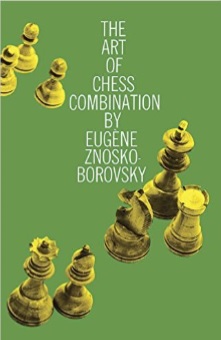
From the second chapter of The Art of Chess Combination:
All chess players know what a combination is. Whether one makes it oneself, or is its victim, or reads of it, it stands out from the rest of the game and stirs one’s admiration. Nevertheless, it is difficult to define the meaning of the word exactly. Definitions are either too wide or too narrow. The best of them convey very little to our mind, and do not correspond with the feeling which an actual combination inspires in us. . . .
Generally speaking, a combination, in the course of a game, has a quite distinct unity. Its beginning and its end can be determined. The moves which compose it are fairly closely linked with certain special characteristics, which we may sum up.
Be aware that this book by Znosko-Borovsky uses the old descriptive chess notation.
.
Beat That Kid in Chess
Published in 2015, this paperback book is for the “early” beginner, the novice who knows little more than the moves of the game but would like to learn how to win. It uses a new teaching method called nearly-identical positions, which helps teach tactics more effectively than other chess books for beginners.
The chess combinations are mostly very simple, in keeping with a book for the “raw” beginner, who would become bewildered by the complexities in an average chess book.
From page 43 of Beat That Kid in Chess:
The two white rooks in Diagram-31 are called doubled rooks. Each one supports the other. Black has two reasonable options: Get the rook at d8 to a safe square next to its king or protect the rook at d8 by moving the other rook to d3. I advise moving the other rook over to protect its brother. By the way, with the black rook at a3 moving to d3, black would also have doubled rooks.
How to Beat Your Dad at Chess
Don’t confuse this chess book with Beat That Kid in Chess, although their titles and covers are similar. The publication by Murray Chandler, How to Beat Your Dad at Chess, is not generally recommended for beginners, at least not for those who have recently learned the rules of the game. It’s much better for the player who has had some experience in winning games.
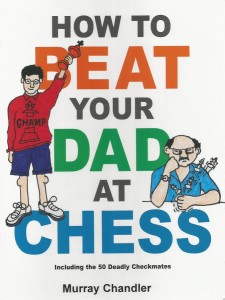
These two books having cartoon characters on the covers—neither one concentrates on how to beat the opponent indicated. Those appear to be marketing angles regarding “that kid” or “your dad.” Both teach you how to win, regardless of who your opponent is. Let’s now look into the second book.
From page 62 of How to Beat Your Dad at Chess:
A queen and a bishop are a classy double-act when it comes to homing in on the vulnerable h7-square. This straightforward but lethal mating pattern is fundamental to the success of many more complex combinations. The key components are a black king on h8, a white queen on the h-file, and a white bishop on h7. A move from the white bishop will unveil a discovered check from the queen.
###
.
One of the three publications here reviewed is the chess book Beat That Kid in Chess:
The reading level is most appropriate for teenagers and adults, although some older children would have no problem understanding it. The concepts taught are given simply. This is easy to understand, and could be a perfect gift for a chess beginner.
Chess Combination by Paul Morphy
The American chess master Paul Morphy (1837-1884) was regarded by many as the greatest chess player in the world, during his tour of Europe in 1858, and at that time some even called him the greatest player in history.
Reviews of three chess books
Beginner Chess Book for Teenagers
The new publication Beat That Kid in Chess
.
Chess Books for Beginners
by admin on Oct.03, 2015, under Chess
A brief search on Amazon, for chess books, can give one the impression that there’s an unlimited number of them, including publications for novices. The following are a few of the available chess books for beginners.
Popular Chess Books on Amazon
How To Play Chess For Beginners: Tips & Strategies To Win At Chess
118 pages; published through Createspace; 2014
“The basic rules, how to setup the board, chess terminology, an overview of the 3 stages of chess, basic checkmates”
*
Chess For Dummies 3rd Edition
384 pages; published by For Dummies; 2011
“Kings, queens, knights — does chess seem like a royal pain to grasp? This friendly guide helps you make the right moves. From using the correct terms to engaging in the art of attack, you’ll get step-by-step explanations that demystify the game.”
*
Bobby Fischer Teaches Chess [apparently not written by Fischer but by ghost writing]
352 pages; published by Bantam; 1982
“This book is essentially a teaching machine. The way a teaching machine works is: It asks you a question. If you give the right answer, it goes on to the next question. If you give the wrong answer, it tells you why the answer is wrong and tells you to go back and try again.”
A New Chess Book That Uses a New Method
Beat That Kid in Chess: For the early beginner to win games
194 pages; published through Createspace; September 2, 2015
Perhaps the only chess book for beginners that uses the nearly-identical-positions (NIP) approach to training and teaching of tactics. It naturally prepares the reader to see positions in a way more like grandmasters see them.
###
.
Best Chess Book for the Early Beginner
‘Beat That Kid’ in Chess was created to prepare the early beginner to win a game of chess as quickly as possible. Unlike many other books on chess, this one does not try to push you into an advanced tournament level of ability, which can take years . . .
Why show a chess student a position that’s almost the same as one that was already shown to that student? Many small details can make an infinite difference in chess, and these can be created in nearly-identical positions.
The Chess Book for the Raw Beginner
. . . This book can take you into a level that should help you defeat many beginners, at least sometimes. In other words, you will no longer be a raw beginner and will instead be able to defeat raw beginners, at least more often than you lose.
What Kind of Chess Beginner Are You?
“I know how the pieces move and I know the rules of chess, at least most of them. And yet when I look at the board, I don’t know much about what to do. I can move pawns, knights, bishops, rooks, and the king and queen, but which one and where to move it?” [What a raw beginner might say]
.
______________________________________________________________________________
Beat That Kid in Chess – For the raw beginner to learn how to win
.
Chess End Game of Queen Versus Rook
by admin on Sep.25, 2015, under Chess
Derek Grimmell has produced a series of chess videos on Youtube, each explaining attacking and defending principles in the queen-versus-rook end game. These have inspired the chess-book author Jonathan Whitcomb to propose that this kind of end game can benefit early beginners in the learning process, but simple tactics need to be emphasized.
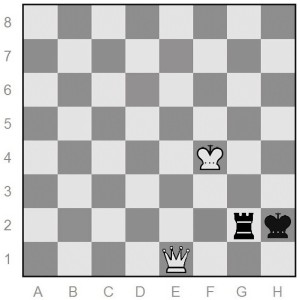
A Philidor position in the queen-versus-rook endgame of chess
Although many of the positions used by Grimmell are more appropriate for tournament players, Whitcomb advocates using simple tactical themes in teaching this kind of end game: “The Philidor position is great to know for advanced chess competitors, but it’s too difficult for the raw beginner to remember all the details.”
.
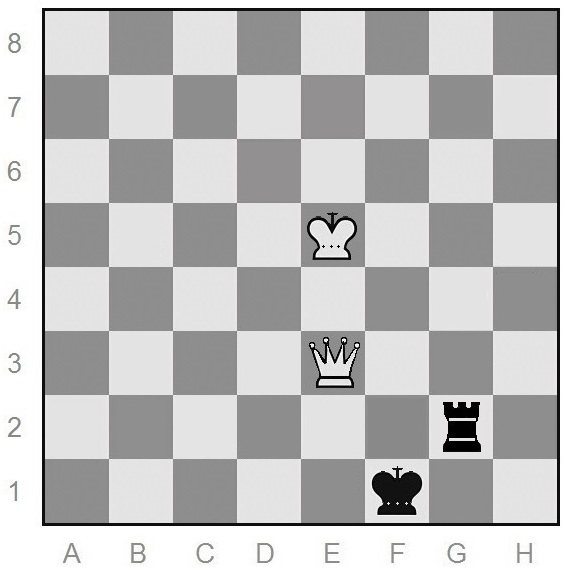
Black to move and draw in this simple lesson for the raw beginner
In the larger diagram above, it is black’s turn to move. It is possible to get a draw, but what move would work? The key in this position is in the lineup of the white king and white queen. Black moves the rook to the e2 square, pinning the queen. As the rook is protected by the black king, white is forced to give up the queen in exchange for capturing the rook. Only two kings would then be left on the board, an automatic draw.
###
.
Queen vs Rook Chess Endgame – “Absolute Seventh”
When the defending king is on an edge of the board, in the queen versus rook end game, one defense is using the rook to cut off the attacking king.
Trapezoid Pattern of Queen Versus Rook
Derek Grimmell calls this the trapezoid . . . Although it may look innocent enough, black has no move that does not quickly lose.
Cage in a Queen Versus Rook Endgame
Attacker’s advantage with a cage against the defending king – video by Derek Grimmell
“For a beginner learning the end game, you first need to learn how to win when you are ahead in material. Knowing how to win with a king and queen versus a long king is great, but how do you get that queen?” [From the book for beginners ‘Beat That Kid in Chess’]
Patience in Winning a Chess Game
Moving the rook to an open file is natural in the middle game. In the opening, however, the knights and bishops should usually be developed first.
.


